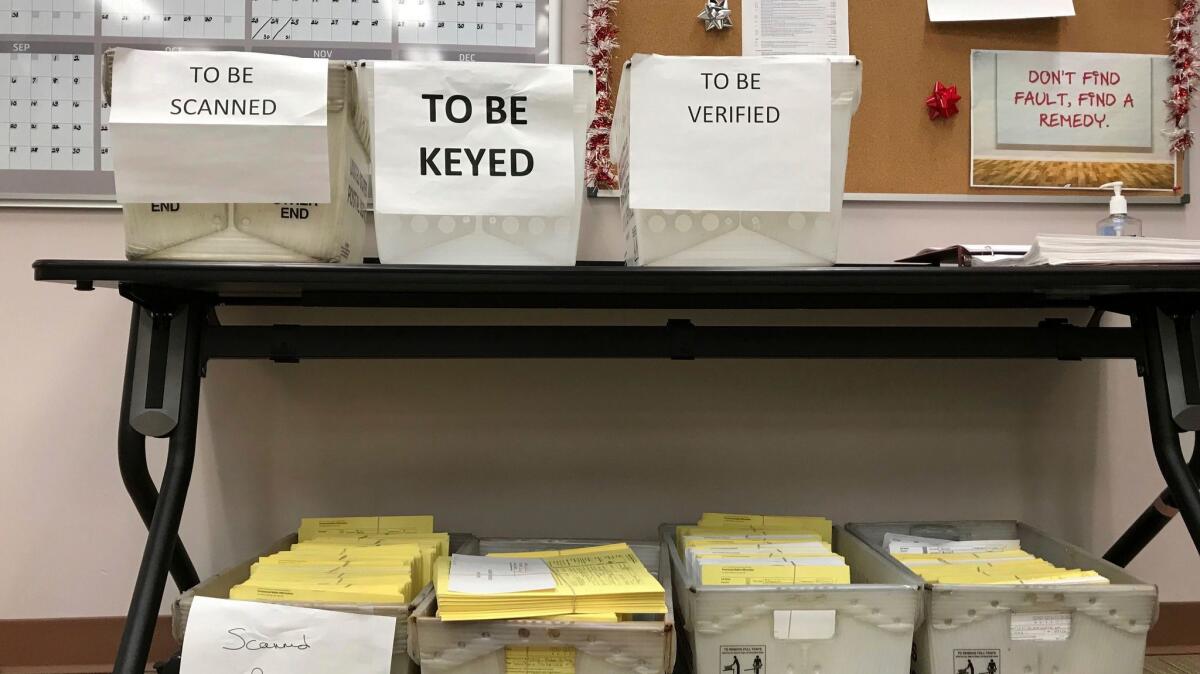Editorial: Don’t purge voters for not showing up

- Share via
Voting is a precious right, but it’s also one that a citizen should feel free not to exercise on election day if the choices on the ballot don’t inspire him.
That was the decision a Kent, Ohio, software engineer named Larry Harmon made in 2010 and 2014 when he skipped those midterm elections. Yet when Harmon showed up to vote in a 2015 referendum on legalizing marijuana, he discovered that his name had been purged from the election rolls even though he still resided at the same address.
Harmon’s not alone. Ohio’s policy deprives untold numbers of perfectly eligible voters of the franchise in clear violation of federal law. That’s an injustice the Supreme Court must now rectify.
Harmon was the victim of an Ohio policy under which voters who have been inactive for two years are mailed a “confirmation notice” by election officials. If they fail to respond to the notice and then fail to vote for four consecutive years or reregister, they are stricken from the rolls. (Harmon says he doesn’t recall receiving a notice.)
Last week, lawyers for Harmon and other voters targeted by Ohio’s “use it or lose it” policy asked the Supreme Court to rule that it violates the 1993 National Voter Registration Act, which prohibits states from removing anyone from the federal rolls “by reason of the person’s failure to vote.”
That is what a federal appeals court ruled, in a decision that restored 7,500 voters to the rolls in time to take part in the 2016 presidential election. Ominously, however, during oral argument, several justices seemed sympathetic to the state’s position.
Justice Samuel A. Alito Jr. said that under Ohio’s process, failure to vote helps determine whether someone has moved and is “not the ground for removal in and of itself.” That’s a quibble. As Justice Ruth Bader Ginsburg observed: “Congress didn’t want failure to vote to be a trigger” for that process.
Justice Stephen Breyer echoed Ohio’s argument that the state was trying to fulfill another goal of federal law, decreasing the number of dead or ineligible voters on the rolls. True enough, but there are ways to improve the accuracy of voter lists without presuming that people who choose not to vote in one or two elections have moved or died.
In deciding this case, the court should be aware of the larger political context of a systematic effort to make it harder for some groups in America to exercise the franchise. Justice Sonia Sotomayor noted that Ohio’s policy for purging voter rolls — and its assumption that failure to vote is a sign that the voter has moved — disproportionately disenfranchises “certain cities where large groups of minorities live.” That disparate impact makes it even more important for the court to tell Ohio to find another way to keep its voter rolls up to date.
Follow the Opinion section on Twitter @latimesopinion and Facebook
More to Read
A cure for the common opinion
Get thought-provoking perspectives with our weekly newsletter.
You may occasionally receive promotional content from the Los Angeles Times.






